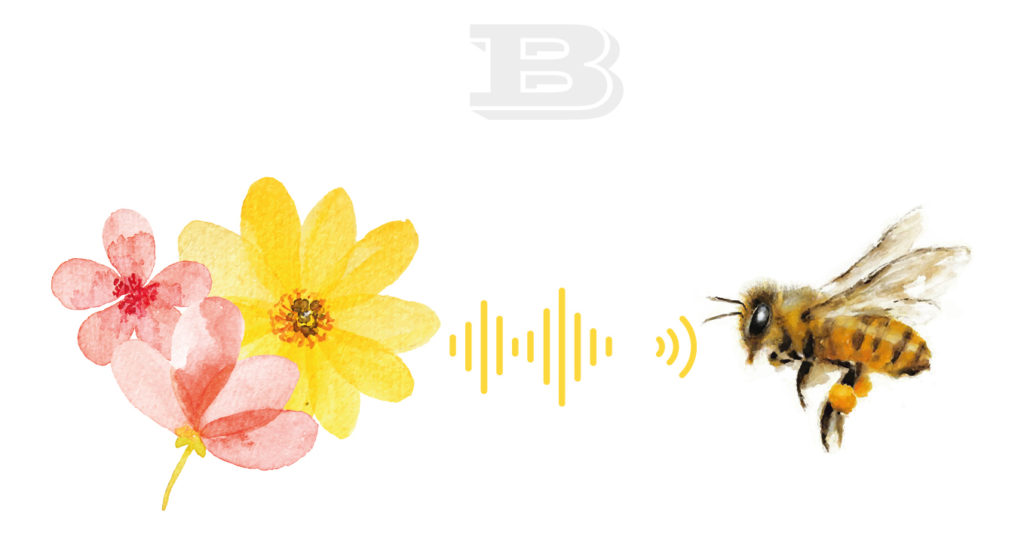Perché le api sono attirate dai fiori? Scopritelo nel nostro nuovo post!
Il polline e il nettare sono il nutrimento fondamentale delle api e si trovano nei fiori e nelle piante.
Il primo fornisce soprattutto le proteine e riveste un ruolo principale per la nutrizione delle larve e delle api nutrici, il secondo arricchisce di zuccheri la dieta di questi insetti. I fiori, al fine di potersi riprodurre tramite impollinazione, mettono in atto una serie di strategie per trarre a sé le api. Alcune di queste sono molto semplici e conosciute, altre sono invece frutto di lavoro di seduzione a dir poco straordinario che, evoluitosi per milioni di anni, si è espresso in forme del tutto sorprendenti.
Una conversazione “onesta”, a scosse di Volt
Una curiosa tecnica usata dai fiori per attrarre gli impollinatori è quella di inviare segnali elettrici per comunicare la quantità di polline e nettare a disposizione.
Lo studio viene dall’Università di Bristol. Gli scienziati hanno spiegato che, attraverso scosse elettriche, i fiori rivelano all’ape la quantità di polline e nettare presente al loro interno: avverrebbe quindi una sorta di conversazione “onesta”, in cui la funzione dell’impollinatore verrebbe compensata da una palese promessa di “bottino”.
Ma come viene usata quest’arma di seduzione? I fiori sarebbero in grado di modificare la propria carica elettrica che, fino a 200 Volt, verrebbe percepita dalle api. Il piccolo e invisibile “scambio” trasmetterebbe quindi informazioni preziose all’impollinatore, spinto a posarsi su di un fiore piuttosto che su un altro. D’altra parte i fiori sono generosi: come affermano gli studiosi Daniel Robert, l’ultima cosa che vorrebbero è «attrarre un’ape per poi non riuscire a fornire nettare».
A qualcuno piace dolce: l’udito dei i fiori
Nel dicembre del 2018 sono stati pubblicati i risultati di alcuni esperimenti atti a verificare un’ipotesi davvero particolare.
Lilach Hadany, ricercatrice della Tel Aviv University, si era chiesta se anche le piante, proprio come gli animali, fossero in grado di percepire i rumori. I suoi studi su di una pianta della famiglia delle Onagraceae, l’Oenothera drummondii, hanno mostrato che la concentrazione di zucchero presente nel nettare di questa specie incrementa gradualmente dopo il passaggio delle api. A scatenare la dolcezza delle secrezioni non era però il bottinare degli insetti, ma le vibrazioni delle ali delle api, che l’Onagraceae è in grado di cogliere su precise frequenze. Al contrario, se sollecitata dalle vibrazioni del vento, ad esempio, la quantità di zucchero nel nettare non cambia. La prova che anche le piante possono “ascoltare” è arrivata sottoponendo i fiori a frequenze registrate simili a quelle prodotte dalle api: la concentrazione di zuccheri, ha mostrato la ricercatrice israeliana, aumentava anche del 20%!
Why are bees attracted to flowers? We explore this answer in our latest blog post!
Pollen and nectar, the fundamental nourishment for bees, and are found in flowers and plants.
The former mainly supplies proteins and plays a main role in feeding the larvae and nurse bees, the latter enriching the diet of these insects with sugars. However, it is a symbiotic relationship as he flowers need the bees to reproduce. In order to achieve pollination, the flowers implement a series of strategies to draw the bees to them. Some of these methods are very simple and well-known, others are instead the result of the work of seduction, to say the least. These extraordinary methods that have evolved over millions of years and are still surprising.
An “honest” conversation, with electric shocks
A curious technique used by flowers to attract pollinators is to send electrical signals to communicate the amount of pollen and nectar available. The study comes from the University of Bristol. Scientists explained that, through electric shocks, the flowers reveal to the bee the quantity of pollen and nectar present inside them; therefore, a sort of “honest” conversation would take place, in which the function of the pollinator would be compensated by a clear promise of “booty”. But how exactly does this seduction work? The flowers are able to change the electric charge up to 200 volts, which is still perceived by bees. The small and invisible “exchange” conveys valuable information to the pollinator, who is driven to rest on that flower rather than another. But fear not, the flowers are generous. As scholar Daniel Robert puts it, “the last thing they would like is to attract a bee and then fail to provide nectar”.
Some like it sweet: the flowers listen
In December 2018, the results of experiments to verify a very particular hypothesis were published. Lilach Hadany, a researcher at Tel Aviv University, wondered if plants, like animals, could hear noises. Looking at a plant of the Onagraceae family, the Oenothera drummondii, he discovered that the concentration of sugar present in the nectar of flowers gradually increased after the passage of bees. The increase was triggered by the perception of the vibrations produced by the wings of the bee, which the flower was able to grasp on precise frequencies. In fact, the flowers maintained the same amount of sugar in the nectar when stressed by similar vibrations produced by the wind. By subjecting the flowers to the recorded sounds of bees or similar frequencies, the concentration of sugars in the nectar increased by 20%.



